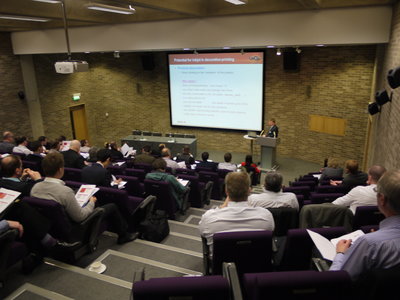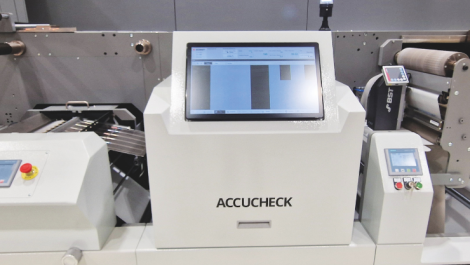Industrial Inkjet Ltd hosted a presentation to over 40 delegates to show the advantages of embracing direct product decoration and how converters can adapt to the removal of labels entirely. By Michal Lodej.
Direct product decoration could be an opportunity for label converters, despite the fact that labels may not be needed in the future. Paddy O’Hara, director of technology, Industrial Inkjet Ltd said, ‘Direct product decoration with inkjet is now in its infancy. In the beginning new technology is at a high risk, but as time goes on it improves, the risk goes but so too does its value.’
One of the advantages is the wide range of shapes and materials that can be printed on. Different applications, which used this technique, were shown including ear defenders, sponges, perfume bottles and car number plates. It allows user to print in ways they never have before, adding more value to an already printed product such as printing along the sides of books.
John Corrall, managing director, discussed the advantages and disadvantages of using inkjet for direct product decoration. Digital is perfect for short runs and using variable information, and the quality is constant – the beginning is the same as the end without operator skill or intervention. It is non-contact printing and so useful for delicate materials and has 3D capability.
However, what he emphasised was that even with all these reasons for using digital inkjet, the biggest driver is economics. When it comes to direct decoration the customer does not take on the cost of the labels or the label converter’s overheads. What is more, the process can be added onto the production line as the product is made.
Yet whilst there are many positives, Mr Corall did not overlook the disadvantages of the process. He said, ‘At the moment there are limitations on the colour gamut and spot colours will be able to provide better colour. Even with pre-treatment, ink still needs time to spread and this depends on the type of materials it is being printed on. Throw length is good but can also be a weakness if the flow is too strong it will distort the ink.’
With the process of direct product decoration presenting itself as a cheaper option which can integrate seamlessly into the production line it would be understandable for manufacturers to by pass labels all together. The question is how many manufacturers know about printing? Ink spread, pre-treatment, curing and many other complicated components of printing is not something that a manufacturer of ear defenders will know about. So here lies where label converters can still be involved by taking up that part of the process at the end of the production line. Could this be the future of the label printer?






